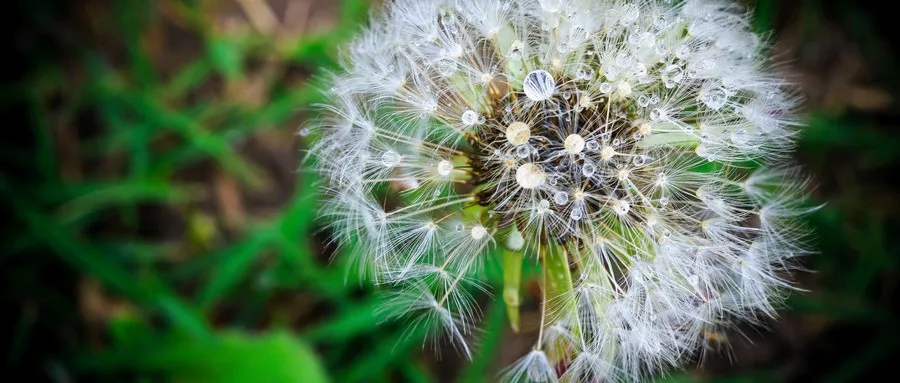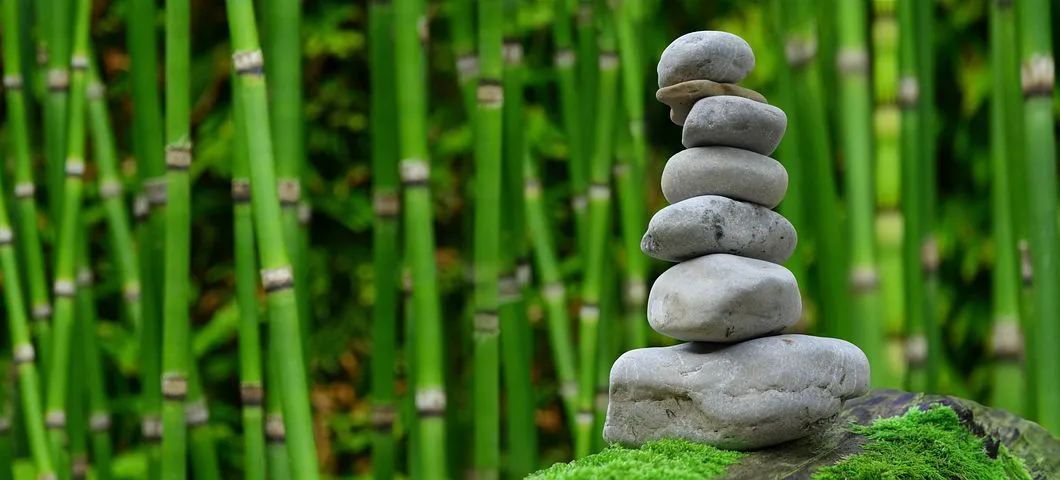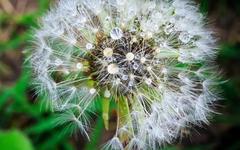1. “In ancient times, the best physicians were those who treated the state, the good physicians treated people, and the inferior physicians treated diseases.”
In ancient times, good chancellors understood Traditional Chinese Medicine (TCM), hence the saying “Great sages are proficient in medicine.” Chinese middle school textbooks should include foundational content on TCM.
2. The theory of Yin and Yang in TCM is not a rule, but an objective state.
Yin and Yang exist in opposition and unity. Yin and Yang are a method of classification, where each category contains common attributes. For example, stillness and movement, women and men, night and day, etc. The term Yin and Yang is merely a symbol; mentioning one word evokes associations with a category of things.
3. The theory of the Five Elements in TCM is not feudal superstition, but an integration of objective laws.
Ancient Chinese believed that the universe is composed of five basic elements: Wood, Fire, Earth, Metal, and Water. There are laws of mutual generation and mutual restraint among these five elements, as well as a “running” relationship. Similarly, the five organs of the human body also exhibit the same operational laws and interdependent relationships, hence the name Five Elements.
4. The correct order of the Five Elements is Wood, Fire, Earth, Metal, Water.
If someone starts with Metal, Wood, Water, Fire, Earth, it indicates that they have not mastered the study of the Five Elements in TCM. The Five Elements in TCM are interrelated, generating and restraining each other.
5. TCM has discovered that the five organs: Liver, Heart, Spleen, Lung, and Kidney, have interdependent relationships and operational laws similar to the five materials of Wood, Fire, Earth, Metal, and Water.
6. The concepts of generation and restraint are easy to understand, while multiplication and insult are relatively unfamiliar.Multiplication indicates excessive restraint, while insult indicates a reversal of roles. The mutual generation and restraint in TCM is a norm, indicating balance. Multiplication and insult are pathological, indicating imbalance.
7. Multiplication indicates that TCM believes the direction of disease transmission follows the path of restraint.TCM does not use the term “infection”; it refers to it as “transformation.” For example, the famous saying by the medical sage Zhang Zhongjing: “When observing a liver disease, one should know that the liver transmits to the spleen, and one must first strengthen the spleen.” This means that according to the Five Elements, Wood can restrain Earth; if the Liver (Wood) is diseased, it will “multiply” the Spleen (Earth). Here, “strengthen” does not refer to the concept of reality versus illusion, but rather to establishing a solid firewall in the spleen to prevent liver disease from harming the spleen.
This statement is a classic example of TCM’s “preventing disease before it occurs,” often cited and worth remembering.
8. If you have memorized the Five Elements, you are a TCM practitioner.TCM’s theory of the Five Elements is concise and highly summarizes the harmonious laws between humans and nature; remembering it will benefit you for a lifetime.
9. The essence in TCM is the essence of the human body, which should be smaller and more concentrated than sperm and eggs, closer to a mist, resembling Qi, hence it is called Jing Qi (Essence Qi).Jing Qi nourishes sperm and eggs, enabling human reproduction. Jing Qi also nourishes all cells in the body, constituting Shen Qi (Spirit Qi).
10. Therefore, traditional TCM habitually uses essence to represent theories; Qi, Blood, Jin (Body Fluids), and Ye (Liquids) as forms to explain various functions and effects.In a certain sense, TCM’s “essence” is like the “center of mass” in physics, where one point can represent the overall mass of the human body.

11. TCM does not recognize the pancreas or the duodenum as separate organs.Perhaps because ancient people did not conduct thorough dissections, they generally observed that the spleen and stomach were connected, and thought the spleen resembled solid organs like the heart and liver, thus considering the stomach as an organ for excessive food processing and the spleen as the organ for the transformation of food and water. In this way, they inadvertently sacrificed the pancreas and duodenum, which help in food digestion and absorption.
12. In Chinese, there is a saying that “the liver and gallbladder reflect each other,” indicating that the liver and gallbladder are inherently connected.In TCM, there is a concept of spleen and stomach disharmony, which should actually be termed “pancreas and stomach disharmony.” The pancreas is adjacent to the stomach, and they are closely related, both governing digestion. The Western medical definition of the spleen as an immune organ does not align with TCM’s definition of “spleen governing transformation,” leading Western medicine to feel that TCM is speaking nonsensically, which is quite embarrassing.
13. This serious error was first discovered by the famous Qing Dynasty physician Wang Qingren.Wang Qingren, through his quiet dissections, identified the pancreas and illustrated its shape in his book “Correction of Medical Errors,” which matched the anatomical diagrams of Western medicine, referring to it as the spleen.
Unfortunately, at that time, the TCM community did not pay enough attention to Wang Qingren’s corrections.
14. Apart from the differing understanding of the spleen, TCM and Western medicine have similar views on the functions of the other four organs.If the TCM community agrees to accept the notion that the “spleen” is actually “spleen-pancreas,” then TCM teachers can use Western anatomical diagrams to explain TCM’s organ systems, achieving a one-to-one correspondence, utilizing Western knowledge for TCM. This would allow TCM’s five organs to be more tangible, without needing to be evasive, as if TCM’s organs were all virtual.
15. For a long time, the functions of the TCM spleen have been at odds with the anatomical system, leading to widespread skepticism about the scientific validity of TCM.
16. Nowadays, those studying TCM feel quite divided.In the 21st century, with so much visible, some TCM teachers still emphasize that “the five organs in TCM are representations, not organs, and have no relation to Western medicine; one must forget Western medicine when learning TCM.”
However, whether students are understanding the five organs or doctors are explaining them to patients, everyone unconsciously uses Western anatomical diagrams to make the organ representations more concrete. In fact, the five organs in everyone’s mind are both representations and organs.
17. The “spleen” in TCM textbooks should be renamed “spleen-pancreas.”
Of course, if today the names in the human anatomical diagrams were revised, changing the pancreas to spleen and the spleen to pancreas, it could permanently clear the misunderstandings surrounding TCM’s “spleen.” However, there would be significant resistance, and it would be difficult for Western medicine to agree or change their terminology.
18. Currently, a remedial measure would be to rewrite TCM’s Liver, Heart, Spleen, Lung, and Kidney as Liver, Heart, “Spleen-Pancreas” (which still sounds similar to spleen), Lung, and Kidney in textbooks, and promote this. This way, we can combine “spleen-pancreas” in pronunciation, allowing the spleen, which governs transformation, to take shape in the pancreas.
19. At the very least, we should make a specific note of this in TCM textbooks or popular science books.In the future, people can still refer to the spleen-pancreas as the spleen, just as we discuss the direction of electric current in physics, which is actually incorrect, as it is opposite to the actual direction of electron movement. However, since everyone is accustomed to it, we have to accept it as a convention.
20. For a long time, TCM has discussed organ representations without addressing the actual organs.Thus, it has never specified the location, shape, structure, and physiological organization of the five organs and six bowels. This approach, in today’s information age, is absolutely impossible to continue. If we want to popularize TCM, we must discuss both organ representations and actual organs.
21. Calmly speaking, Western medicine’s explanations of organ functions are much simpler than those of TCM and lack a holistic perspective.TCM’s organ representations incorporate elements of holography, which is quite forward-looking.
22. TCM believes that the five organs are inseparable,and the function of each “organ” will affect other organs, potentially causing harm or benefit to the entire body.
23. The main functions of the five organs in TCM are: the Liver governs the smooth flow of Qi, which is the rise and fall of Qi’s entry and exit throughout the body.Additionally, the Liver is responsible for detoxification, storing blood, and housing the soul. Qi is the commander of blood; if Liver Qi is not smooth, it may lead to excessive Liver Yang, causing high blood pressure; or it may lead to Liver Qi stagnation, resulting in menstrual irregularities and breast tenderness.
24. The Heart governs the spirit (thinking), houses the spirit, and governs blood (i.e., the flow of blood, providing blood pressure throughout the body).Human mental confusion, even mental illness, can be improved through TCM and herbal medicine.
25. The Spleen governs transformation.The Spleen is responsible for the transportation and digestion of water and grains throughout the body. The Spleen governs blood (controlling the retention of blood); furthermore, “the Spleen is the root of postnatal life,” “the Spleen is the source of Qi and blood transformation,” “all dampness and swelling belong to the Spleen,” and “the Spleen is the source of phlegm, while the Lung is the storage organ for phlegm”—these classic sayings indicate that the Spleen can produce beneficial “Qi and blood” for the body, but if its transformation is abnormal, it can also produce harmful “phlegm and dampness.”
26. The Lung governs Qi.The Lung is the canopy of the body, connecting to all meridians, responsible for respiration, and providing fresh oxygen. Additionally, the Lung is the upper source of water, responsible for regulating the water pathways. The Lung belongs to Metal, while the Kidney belongs to Water; Metal generates Water, hence the Lung is the upper source of Water.
The moisture in the air is absorbed by the Lung. Lung dryness can lead to coughing. The Lung, through its dispersing function, distributes the essence of food and grains throughout the body; at the same time, it expels waste fluids as sweat or transforms them into urine to be eliminated from the body.
27. The Kidney governs Water.“The Kidney is the root of pre-natal life.” The Kidney stores essence and receives Qi, essence produces marrow, and marrow produces blood (this aligns with Western medicine’s understanding that bone marrow produces blood). The Qi of the Kidney is the essence of food and grains, not oxygen. Oxygen is tangible Qi, while essence is intangible Qi. The Kidney governs water filtration and reproduction, responsible for extracting essence and discarding waste.
28. For both men and women, the left Kidney is considered Yuan Yin (Original Yin), and the right Kidney is considered Yuan Yang (Original Yang).
The left and right Kidneys are like two boilers; the left Kidney is responsible for providing Yin fluids for the entire body, while the right Kidney provides Yang Qi (Essence) for the entire body. Yin is tangible, while Yang is intangible. Yang has heat and can perform work. Therefore, TCM states, “The Kidney is the organ of Water and Fire, governing the Yin and Yang of the body.”
Insufficient Yang Qi leads to impotence; thus, individuals with Kidney Yang deficiency may experience erectile dysfunction. The right Kidney is often referred to as the Ming Men (Gate of Life), a term that signifies the door to life.
29. TCM places particular emphasis on the functions of the Spleen, Liver, and Kidney among the five organs.
Especially for women, if they pay attention throughout the year—promoting Liver health before menstruation, strengthening the Spleen during menstruation, and nourishing the Kidney after menstruation—they will significantly reduce discomforts such as dysmenorrhea and maintain youthfulness and health.

30. The meridian pathways in TCM have fixed directions.
In TCM, the organs and bowels have fixed pairings, such as the Heart with the Small Intestine, the Liver with the Gallbladder, the Bladder with the Kidney, the Lung with the Large Intestine, and the Spleen with the Stomach. The former are organs, while the latter are bowels, corresponding to the five organs and five bowels. However, Chinese people say “five organs and six bowels,” not “five organs and five bowels.” The additional bowel is the San Jiao (Triple Burner).
31. The pairings of TCM organs and bowels,from the perspective of Western anatomical diagrams, make no sense. These pairings are entirely the result of the flow of Qi and meridians in the human body. For instance, the Heart as an organ and the Small Intestine as a bowel have no anatomical relationship, but the Qi pathways and meridians connect them. Sometimes, when heart disease is severe and difficult to treat, treating the Small Intestine can also have a positive impact on the Heart.
32. The concept of TCM organs and bowels reflects TCM’s holistic perspective.If an organ has a problem, it will certainly affect its paired bowel. Organs and bowels share a mutual sympathy; if one suffers, the other is affected. Therefore, treating the bowel will certainly improve the corresponding organ.
33. The concept of the Twelve Meridians in TCM.
The flow of Qi and blood through the meridians is objective, and the fixed pairings of organs and bowels are also objective, similar to the physiological and psychological cycles of humans, which are not subject to human will.
34. Qi and blood flow begins at 11 PM,flowing through the Gallbladder meridian, then at 1 AM through the Liver meridian, followed by the Lung meridian, Large Intestine meridian, Stomach meridian, Spleen meridian, Heart meridian, Small Intestine meridian, Bladder meridian, Kidney meridian, and finally at 9 PM through the San Jiao meridian.
35. Every two hours, a different meridian is activated,and one organ connects to one bowel, and one bowel connects to one organ, maintaining a fixed pairing without confusion.
36. The term “Zi Wu” in Chinese indicates time.Every two hours is a time period. There are 12 time periods in a day, and Qi and blood circulate and flow through the corresponding organs and bowels in a complete cycle. Each time period, due to the infusion of Qi and blood into the corresponding organ and bowel, activates a meridian. Treating diseases of that meridian during its time period through acupuncture or herbal medicine is called “following the trend,” and its effects are much better.
37. From 5 to 7 AM, the Large Intestine meridian is activated, making it easier to have a bowel movement.From 7 to 11 AM, it flows through the Spleen and Stomach, during which time nutrient absorption is optimal, allowing humans to store fat for survival in harsh environments. Eating during this period makes the body more likely to absorb nutrients and gain weight. Those wishing to lose weight should pay attention to their food intake.
38. Although the Western anatomical system cannot validate the flow and pairings, they do acknowledge that different diseases’ outbreaks and mortality have significant correlations with time and seasons.The objective existence of the Twelve Meridians is a natural law that future science can prove.
Disclaimer: The content of this article, if it involves formulas or therapies, is for reference only and should not be used arbitrarily. The article and images are sourced from the internet; if there is any infringement, please contact for removal.
Share this with those who care.
The more people see it, the more health there is!
Today's Recommendations

